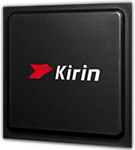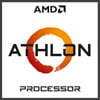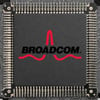
Intel Celeron N4000 Benchmark, Test and specs
Last updated:
The Intel Celeron N4000 has 2 cores with 2 threads and is based on the 9. gen of the Intel Celeron series. The processor uses a mainboard with the BGA 1090 socket and was released in Q4/2017. The Intel Celeron N4000 scores 440 points in the Geekbench 5 single-core benchmark. In the Geekbench 5 multi-core benchmark, the result is 770 points.

| Name: | Intel Celeron N4000 |
|---|---|
| Family: | Intel Celeron (165) |
| CPU group: | Intel Celeron J4000/N4000/N5000 (11) |
| Architecture: | Gemini Lake |
| Segment: | Mobile |
| Generation: | 9 |
| Predecessor: | -- |
| Successor: | -- |
CPU Cores and Base Frequency
The Intel Celeron N4000 has 2 CPU cores and can calculate 2 threads in parallel. The clock frequency of the Intel Celeron N4000 is 1.10 GHz (2.60 GHz). The number of CPU cores greatly affects the speed of the processor and is an important performance indicator.
| CPU Cores / Threads: | 2 / 2 |
|---|---|
| Core architecture: | normal |
| Cores: | 2x |
| Hyperthreading / SMT: | No |
|---|---|
| Overclocking: | No |
| Frequency: | 1.10 GHz |
| Turbo Frequency (1 Core): | 2.60 GHz |
| Turbo Frequency (2 Cores): | 2.60 GHz |
Internal Graphics
The Intel Celeron N4000 has integrated graphics, called iGPU for short. Specifically, the Intel Celeron N4000 uses the Intel UHD Graphics 600, which has 96 texture shaders and 12 execution units. The iGPU uses the system's main memory as graphics memory and sits on the processor's die.
| GPU name: | Intel UHD Graphics 600 |
|---|---|
| GPU frequency: | 0.20 GHz |
| GPU (Turbo): | 0.65 GHz |
| Compute units: | 12 |
| Shader: | 96 |
| Hardware Raytracing: | No |
| Release date: | Q4/2017 |
| Max. displays: | 3 |
|---|---|
| Generation: | 9.5 |
| Direct X: | 12 |
| Technology: | 14 nm |
| Max. GPU Memory: | 8 GB |
| Frame Generation: | No |
Hardware codec support
A photo or video codec that is accelerated in hardware can greatly accelerate the working speed of a processor and extend the battery life of notebooks or smartphones when playing videos.
| h265 / HEVC (8 bit): | Decode / Encode |
|---|---|
| h265 / HEVC (10 bit): | Decode / Encode |
| h264: | Decode / Encode |
| VP8: | Decode / Encode |
| VP9: | Decode / Encode |
| AV1: | No |
|---|---|
| AVC: | Decode / Encode |
| VC-1: | Decode |
| JPEG: | Decode / Encode |
Memory & PCIeThe processor can use up to 8 GB memory in 2 (Dual Channel) memory channels. The maximum memory bandwidth is 38.4 GB/s. The memory type as well as the amount of memory can greatly affect the speed of the system. |
|
| Memory type: | Memory bandwidth: |
|---|---|
| LPDDR4-2400 DDR4-2400 | 38.4 GB/s 38.4 GB/s |
| Max. Memory: | 8 GB |
| Memory channels: | 2 (Dual Channel) |
| ECC: | No |
| PCIe: | 2.0 x 6 |
| PCIe Bandwidth: | 3.0 GB/s |
Thermal ManagementThe thermal design power (TDP for short) of the processor is 6 W. The TDP specifies the necessary cooling solution that is required to cool the processor sufficiently. The TDP usually gives a rough idea of the actual power consumption of the CPU. |
|
|---|---|
| TDP (PL1 / PBP): | 6 W |
| TDP (PL2): | -- |
| TDP up: | -- |
| TDP down: | 4.8 W |
| Tjunction max.: | 105 °C |
Technical details
The Intel Celeron N4000 is made in 14 nm. The smaller the manufacturing process of a CPU, the more modern and energy-efficient it is. Overall, the processor has 4.00 MB cache. A large cache can greatly speed up the processor's speed in some cases such as games.
| Technology: | 14 nm |
|---|---|
| Chip design: | Monolithic |
| Socket: | BGA 1090 |
| L2-Cache: | -- |
| L3-Cache: | 4.00 MB |
| AES-NI: | Yes |
| Operating systems: | Windows 10, Windows 11, Linux |
| Virtualization: | VT-x, VT-x EPT, VT-d |
|---|---|
| Instruction set (ISA): | x86-64 (64 bit) |
| ISA extensions: | SSE4.1, SSE4.2 |
| Release date: | Q4/2017 |
| Release price: | -- |
| Part Number: | -- |
| Documents: | Technical data sheet |
Rate this processor
Benchmark results

The benchmark results for the Intel Celeron N4000 have been carefully checked by us. We only publish benchmark results that have been created by us or that have been submitted by a visitor and then checked by a team member. All results are based on and fullfill our benchmark guidelines.
Geekbench 5, 64bit (Single-Core)
Geekbench 5 is a cross plattform benchmark that heavily uses the systems memory. A fast memory will push the result a lot. The single-core test only uses one CPU core, the amount of cores or hyperthreading ability doesn't count.
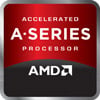
|
AMD A8-5557M
4C 4T @ 3.10 GHz |
||
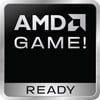
|
AMD Phenom II X4 965
4C 4T @ 3.40 GHz |
||
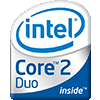
|
Intel Core2 Duo E8300
2C 2T @ 2.83 GHz |
||
|
|
Intel Celeron N4000
2C 2T @ 2.60 GHz |
||

|
Intel Celeron N4000C
2C 2T @ 2.60 GHz |
||

|
AMD Phenom II X4 970
4C 4T @ 3.50 GHz |
||
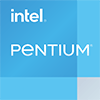
|
Intel Pentium E5800
2C 2T @ 3.20 GHz |
||
Geekbench 5, 64bit (Multi-Core)
Geekbench 5 is a cross plattform benchmark that heavily uses the systems memory. A fast memory will push the result a lot. The multi-core test involves all CPU cores and taks a big advantage of hyperthreading.

|
Intel Pentium 3556U
2C 2T @ 1.70 GHz |
||

|
AMD Phenom II X2 560
2C 2T @ 3.30 GHz |
||

|
Intel Core2 Duo E8300
2C 2T @ 2.83 GHz |
||
|
|
Intel Celeron N4000
2C 2T @ 2.60 GHz |
||

|
Intel Pentium N3700
4C 4T @ 2.40 GHz |
||

|
MediaTek MT6752M
8C 8T @ 1.50 GHz |
||

|
UNISOC SC9863A
8C 8T @ 1.20 GHz |
||
Geekbench 6 (Single-Core)
Geekbench 6 is a benchmark for modern computers, notebooks and smartphones. What is new is an optimized utilization of newer CPU architectures, e.g. based on the big.LITTLE concept and combining CPU cores of different sizes. The single-core benchmark only evaluates the performance of the fastest CPU core, the number of CPU cores in a processor is irrelevant here.

|
Intel Core i3-2330M
2C 4T @ 2.20 GHz |
||

|
Qualcomm Snapdragon 820
4C 4T @ 2.15 GHz |
||
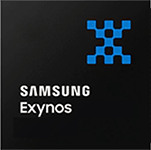
|
Samsung Exynos 9611
8C 8T @ 2.30 GHz |
||
|
|
Intel Celeron N4000
2C 2T @ 2.60 GHz |
||

|
UNISOC T606
8C 8T @ 1.60 GHz |
||

|
Intel Celeron N4000C
2C 2T @ 2.60 GHz |
||

|
Intel Pentium Silver N5000
4C 4T @ 2.70 GHz |
||
Geekbench 6 (Multi-Core)
Geekbench 6 is a benchmark for modern computers, notebooks and smartphones. What is new is an optimized utilization of newer CPU architectures, e.g. based on the big.LITTLE concept and combining CPU cores of different sizes. The multi-core benchmark evaluates the performance of all of the processor's CPU cores. Virtual thread improvements such as AMD SMT or Intel's Hyper-Threading have a positive impact on the benchmark result.

|
Intel Pentium N3710
4C 4T @ 2.56 GHz |
||

|
Intel Celeron 1037U
2C 2T @ 1.80 GHz |
||

|
Intel Celeron 3755U
2C 2T @ 1.70 GHz |
||
|
|
Intel Celeron N4000
2C 2T @ 2.60 GHz |
||
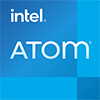
|
Intel Atom x6414RE
4C 4T @ 1.50 GHz |
||

|
Intel Celeron N4000C
2C 2T @ 2.60 GHz |
||

|
Intel Pentium B940
2C 2T @ 2.00 GHz |
||
iGPU - FP32 Performance (Single-precision GFLOPS)
The theoretical computing performance of the internal graphics unit of the processor with simple accuracy (32 bit) in GFLOPS. GFLOPS indicates how many billion floating point operations the iGPU can perform per second.

|
Intel Celeron N3350
Intel HD Graphics 500 @ 0.65 GHz |
||

|
Intel Celeron N4020
Intel UHD Graphics 600 @ 0.65 GHz |
||

|
Qualcomm Snapdragon 625
Qualcomm Adreno 506 @ 0.65 GHz |
||
|
|
Intel Celeron N4000
Intel UHD Graphics 600 @ 0.65 GHz |
||
|
|
HiSilicon Kirin 955
ARM Mali-T880 MP4 @ 0.90 GHz |
||
|
|
HiSilicon Kirin 950
ARM Mali-T880 MP4 @ 0.90 GHz |
||
|
|
HiSilicon Kirin 810
ARM Mali-G52 MP6 @ 0.85 GHz |
||
Estimated results for PassMark CPU Mark
Some of the CPUs listed below have been benchmarked by CPU-monkey. However the majority of CPUs have not been tested and the results have been estimated by a CPU-monkey’s secret proprietary formula. As such they do not accurately reflect the actual Passmark CPU mark values and are not endorsed by PassMark Software Pty Ltd.

|
AMD GX-416RA
4C 4T @ 1.60 GHz |
||

|
AMD A4-6300
2C 2T @ 3.90 GHz |
||

|
Qualcomm Snapdragon 435
8C 8T @ 1.40 GHz |
||
|
|
Intel Celeron N4000
2C 2T @ 2.60 GHz |
||
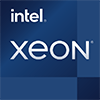
|
Intel Xeon E3-1220L v3
4C 8T @ 1.50 GHz |
||

|
Intel Core i7-2610UE
2C 4T @ 1.50 GHz |
||

|
AMD GX-415GA
4C 4T @ 1.50 GHz |
||
CPU-Z Benchmark 17 (Multi-Core)
The CPU-Z benchmark measures a processor's performance by measuring the time it takes the system to complete all benchmark calculations. The faster the benchmark is completed, the higher the score.

|
Intel Pentium N3540
4C 4T @ 2.16 GHz |
||

|
Intel Celeron 3865U
2C 2T @ 1.80 GHz |
||

|
Intel Core2 Duo E4600
2C 2T @ 2.40 GHz |
||
|
|
Intel Celeron N4000
2C 2T @ 1.10 GHz |
||

|
Intel Core2 Duo E6550
2C 2T @ 2.33 GHz |
||

|
Intel Pentium E6300
2C 2T @ 2.80 GHz |
||

|
Intel Pentium E2220
2C 2T @ 2.40 GHz |
||
Cinebench R15 (Single-Core)
Cinebench R15 is the successor of Cinebench 11.5 and is also based on the Cinema 4 Suite. Cinema 4 is a worldwide used software to create 3D forms. The single-core test only uses one CPU core, the amount of cores or hyperthreading ability doesn't count.

|
Intel Celeron N4100
4C 4T @ 2.40 GHz |
||
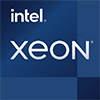
|
Intel Xeon E5-2603 v4
6C 6T @ 1.70 GHz |
||

|
Intel Xeon E5-2609 v4
8C 8T @ 1.70 GHz |
||
|
|
Intel Celeron N4000
2C 2T @ 2.60 GHz |
||

|
AMD A6-9220
2C 2T @ 2.90 GHz |
||

|
Intel Celeron 3215U
2C 2T @ 1.70 GHz |
||

|
Intel Celeron 3755U
2C 2T @ 1.70 GHz |
||
Cinebench R15 (Multi-Core)
Cinebench R15 is the successor of Cinebench 11.5 and is also based on the Cinema 4 Suite. Cinema 4 is a worldwide used software to create 3D forms. The multi-core test involves all CPU cores and taks a big advantage of hyperthreading.

|
AMD A10-7300
4C 4T @ 2.70 GHz |
||

|
Intel Celeron 3865U
2C 2T @ 1.80 GHz |
||

|
Intel Celeron 3867U
2C 2T @ 1.80 GHz |
||
|
|
Intel Celeron N4000
2C 2T @ 2.60 GHz |
||

|
Intel Celeron J3160
4C 4T @ 2.24 GHz |
||

|
Intel Celeron N3160
4C 4T @ 2.24 GHz |
||

|
Intel Atom x5-Z8500
4C 4T @ 2.24 GHz |
||
Benchmarks

Geekbench 5 (SC)
2,488 entries
2,488 entries

Geekbench 5 (MC)
2,461 entries
2,461 entries

Geekbench 6 (SC)
1,755 entries
1,755 entries

Geekbench 6 (MC)
1,703 entries
1,703 entries

FP32 SP (iGPU)
2,026 entries
2,026 entries
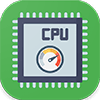
PassMark CPU-Mark
2,392 entries
2,392 entries
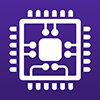
CPU-Z Benchmark 17 (MC)
733 entries
733 entries

Cinebench R15 (SC)
1,106 entries
1,106 entries

Cinebench R15 (MC)
1,101 entries
1,101 entries

Geekbench 3 (SC)
942 entries
942 entries

Geekbench 3 (MC)
938 entries
938 entries

Cinebench R11.5 (SC)
825 entries
825 entries

Cinebench R11.5 (MC)
836 entries
836 entries
Description of the processor
The dual-core CPU Intel Celeron N4000 designed for the mobile sector has a standard clock rate of 1.10 gigahertz. If necessary, the processor activates turbo mode, in which the clock frequency of the 2 cores increases to 2.60 gigahertz each.The Intel Celeron N4000 was released in the fourth quarter of 2017, is based on Intels "Gemini Lake" architecture and is manufactured using the 14 nanometer process. The processor has to be firmly soldered and is used in various notebooks, such as the Lenovo Chromebook S340-14, but also in some mini PCs, such as the Gigabyte Brix GB-BLCE-4000C.
When it comes to memory, device manufacturers have the choice between DDR4 memory with a clock frequency of up to 2400 megahertz or LPDDR4 memory with also up to 2400 megahertz. The 4 megabyte L3 cache supports the exchange of data between the processor and the main memory.
The internal graphics unit of the Intel Celeron N4000 with the name "Intel UHD Graphics 600" supports image output on up to 3 screens in parallel. The graphics unit clocks at 0.20 gigahertz when it is not really used. If you give the graphics unit a little more to do, turbo mode is activated and the clock frequency increases to up to 0.65 gigahertz.
Due to the very low TDP (Thermal Design Power) of only 6 watts, the Intel Celeron N4000 is a very economical processor in terms of energy consumption. At the same time, this also means that it does not develop as much heat and is therefore also used in some tablets, such as the Lenovo Ideapad D330-10IGM.
With 138 points, the Cinebench 15 multi-core score is on par with an Intel Celeron N3160 from the first quarter of 2016 (Braswall architecture). Here, however, 4 cores were still necessary to achieve this score.
Popular comparisons
back to index



